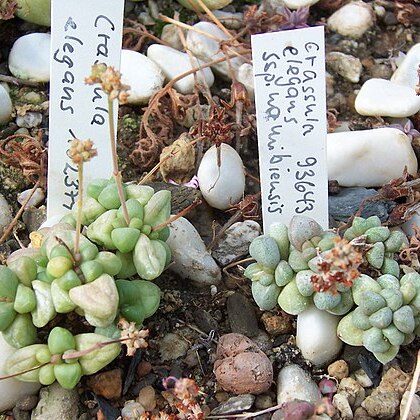Dwarf perennial, with short branches, 10-80 mm tall, internodes hidden. Leaves ovate to lanceolate, very swollen, 5-15 x 4-8 mm, green to deep red, glabrous to finely hairy or papillate. Flowers in small, round-topped heads, on a pubescent peduncle 25-60 mm long, tubular, petals 2-2.5 mm long, fused in lower 0.5 mm, cream, fading to brown.
A succulent.

